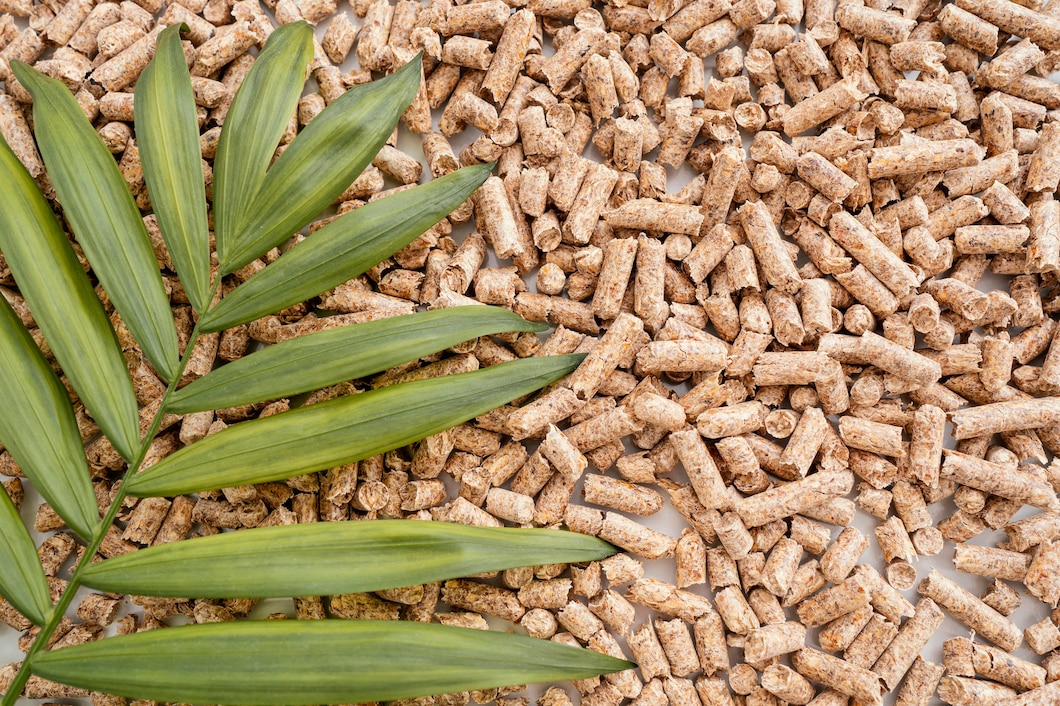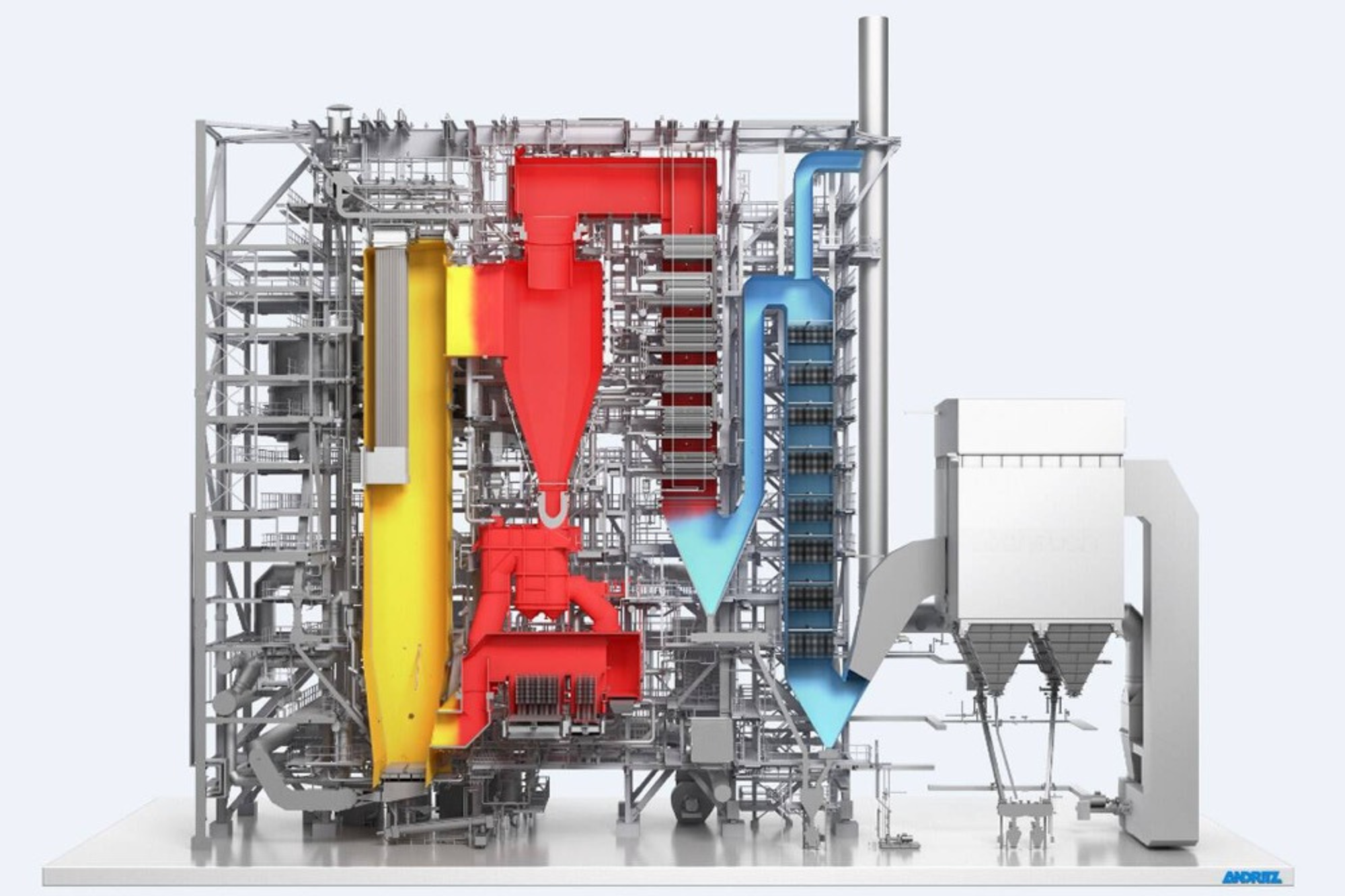In July 2023, Japan’s Toyo Corporation expressed a desire to collaborate with the Vietnam Electricity Group in developing energy and producing biomass pellets for power generation. Following this, on August 1, 2023, the Power Engineering Consulting Joint Stock Company 2 (PECC2) and Toyo signed a cooperation agreement to experiment with biomass pellet production, combined with coal for power generation.
Overview of Biomass Pellet Electricity Globally: Modern bioenergy is gaining attention worldwide as a low-carbon resource. Its role in electricity generation is increasingly recognized due to the approaching net-zero carbon goals. Indian scientists recently evaluated the economic and technical feasibility of biomass pellet-based power (BPBP) in India. The availability of biomass from agriculture and forestry is estimated at 242 million tons, expected to rise to 281 million tons by 2030-2031 due to increasing food demand.
The potential capacity of BPBP projects is estimated at 35 GW for 2030-2031. The cost of grid-based electricity for BPBP is estimated at 0.12 EUR/kWh, compared to 0.10 EUR/kWh for imported coal power plants. In Indian states with lower biomass electricity tariffs, the carbon break-even price for BPBP projects is estimated at 18 EUR per ton.
Moreover, BPBP projects could create over 5 million person/months of employment in biomass power plant construction and over 200,000 full-time jobs in BPBP plant operation and biomass pellet production. According to the International Energy Agency (IEA), bioenergy (including traditional biomass) is the largest renewable energy source, providing 10% of global energy supply. Most consumption in developing countries is for cooking and heating, significantly impacting human health (indoor air pollution) and the environment. Modern biomass is sustainably produced for electricity/heat and biofuels for transport, whereas traditional biomass is unsustainably used in inefficient stoves.
In 2010, bioenergy accounted for 12% of the world’s final energy consumption, with 9% from traditional sources and 3% from modern bioenergy. Therefore, rapidly increasing modern biomass use is essential to meet international goals to double the global renewable energy share by 2030. Global bioenergy output could reach 180 EJ by 2050 (compared to 50 EJ in 2010 under a standard scenario).
Efforts to overcome biomass fuel’s challenging characteristics (low bulk density and resulting low energy/volume density, heterogeneous structure) have led to growing interest in biomass pelletization and briquetting. Biomass pellets are among the fastest-growing modern bioenergy sectors.
The Food and Agriculture Organization (FAO) reported that in 2016, 29.1 million tons of pellets were produced globally in over 800 plants with capacities over 10,000 tons/year. Biomass pellet production has grown nearly 20% annually over the past decade, driven by EU policies and goals for bioenergy use.
Leading producers are the EU (49%), the USA (22%), Canada (10%), Vietnam (5%), and Russia (3%). In Europe, EU policy goals for renewable energy and greenhouse gas emission reduction significantly drive large-scale wood pellet use. Production and export of wood pellets from the southeastern USA have doubled since 2011, mainly due to increased EU demand.
In developing countries, reduced availability of firewood requires efforts to use traditional biomass fuels more efficiently. For instance, about 25% of India’s total energy consumption is met from various biomass sources (agricultural residues, animal dung, forest waste, firewood, etc.). Most is used for domestic, commercial, and industrial activities (animal feed, cooking fuel, rural housing construction materials, industrial fuel for boilers, cardboard production, and similar applications). Biomass accounted for over 85% of rural India’s energy fuel consumption in 2005, primarily for cooking needs.
However, traditional biomass use has drawbacks, notably its low bulk density. To improve these adverse characteristics for transportation, storage, and combustion, agricultural and forestry residues must be upgraded by increasing their bulk density through pelletization or briquetting. The pelletizing process increases biomass bulk density to over 1,000 kg/m³.
Compared to other modern bioenergy types, biomass pellets are one of the fastest-growing sectors. Beyond increasing the volumetric energy content of raw biomass, pelletizing enhances thermal conversion efficiency due to stable moisture content. In pellet form, non-wood biomass combustion can produce lower ash content than burning raw, heterogeneous fuel.
Biomass pellets can be used in boilers for electricity and heat production in two ways:
- Boilers can be exclusively fired with biomass pellets.
- Biomass pellets can be co-fired with coal.
While the ash and slagging risks of some biomass fuels due to high alkali, silica, or chlorine content currently limit their combustion applications, various chemical additives and antagonistic effects can be used to mitigate ash-related issues.
Adding 10% wood char increases the calorific value from 4,630 kcal/kg (wood pellets without additives) to 4,800 kcal/kg (wood pellets with additives). Additionally, increasing additive content in wood pellets enhances pellet length and bulk density.
Recent studies indicate no significant increase in slagging during co-firing biomass with coal, as long as the biomass contribution is limited to a maximum of 20%, although the optimal biomass-to-coal co-firing ratio varies per case study.
Empirical correlation analyses suggest that 100% wood pellets produce medium to high ash content compared to other fuel combinations.
- Biomass Pellet Power Generation in India:
In India, wood pellets are primarily used for cooking and heating, or for commercial purposes. Over 400,000 Oorja stoves (a combination of uniquely designed “micro-gasification” devices and biomass pellet fuel) have been sold in India from 2006 to 2010.
Conversely, biomass pellets are increasingly used for power generation in several countries. In Europe, North America, and Asia (e.g., China, Japan, South Korea), wood pellets are mainly used for co-firing in coal thermal power plants.
In India, the Electricity Act of 2003 mandates State Electricity Regulatory Commissions (SERC) to enforce Renewable Purchase Obligations (RPO). To meet the National Action Plan on Climate Change (NAPCC) goals, the Indian Government introduced the Renewable Energy Certificate (REC) mechanism in November 2010.
Ahead of COP21, India announced plans to increase biomass capacity to 10 GW by 2022 from the current 4.4 GW as part of its overall goal to increase non-fossil fuel power capacity to 40% of the country’s total electricity by 2030. Generating power from biomass pellets and/or co-firing biomass pellets with coal can help meet SERC’s RPO targets in states with low wind and solar energy resources (and limited wasteland) with abundant agricultural, forestry residues, or states that can attract investment through the REC mechanism.
Domestic coal production is rising primarily due to coal sector reforms, and international coal prices have also significantly increased. Based on these factors, India’s coal imports (typically about 25%) are unlikely to increase proportionally in total coal consumption in the future.
In the long term, if the cost of electricity production from biomass pellets becomes competitive with coal, a portion of coal imports might be replaced with biomass imports. Stringent climate policies are forcing India to seriously consider importing biomass pellets.
Surplus agricultural biomass alone (133 million tons in 2015-2016) could replace about 25% of the current coal consumption of 531 million tons in the power sector (through coal-biomass co-firing). The potential CO2 mitigation available from coal replacement is estimated at 192 and 205 million tons CO2e in 2020-2021 and 2030-2031, respectively, using a baseline of 0.82 kg CO2e/kWh if all surplus agricultural and forestry waste is redirected for power generation.
Beyond CO2 reduction from coal replacement, biomass pellet use in India could efficiently utilize agricultural, forestry residues. Farmers traditionally burn agricultural residues as a quick disposal method. Approximately 7-8 million tons of rice residues are burned annually in Punjab, India.
When assessing the economic and technical feasibility of pellet-based power generation in India, scientists found that the market price of biomass pellets in 2015 in India was 0.17 to 0.21 EUR/kg (mainly used for cooking services).
Large-scale use of biomass pellets for power generation can play a significant role in stimulating local economies and promoting industrial development. Employment opportunities in the biomass pellet development sector will primarily come from collecting, transporting, processing biomass materials (agricultural, forestry residues) and from biomass pellet production.
For example, Nishant Bioenergy Ltd. in Mohali, Punjab, created many jobs for biomass plants with a capacity of 1,500 kg/hour (9,000 tons/year). Particularly, transporting agricultural residues from farms/industrial areas to biomass pellet plants…
Additional employment will be generated in the construction of biomass power plants. A 10 MW biomass power project can create jobs for about 100 workers during an 18-month construction phase, 25 full-time workers to operate the facility, and 35 workers for collecting, processing, and transporting biomass materials. A 30 GW biomass power plant for 2010-2011, increasing to about 35 GW for 2030-2031, would create over 6.3 million man-months in construction and 87,500 full-time jobs in biomass power plant operation during this period.
The annual power generation potential from biomass pellets is estimated at 244 TWh in 2030-2031 out of a total of 4,000 TWh electricity production in India.
India, primarily an agricultural economy, emerges as an ideal candidate for a sustainable energy development model based on bioenergy. This model leverages the country’s abundant agricultural and forestry by-products, as well as municipal waste, while generating income and employment opportunities, particularly in rural areas.
Moreover, the transport distance plays a crucial role in the economic viability of biomass power plants (BPBP). Nations should assess their potential in maximizing the use of agricultural and forestry residues, set goals for biomass-based power generation, and develop strategies for utilizing both pelletized and non-pelletized biomass in power plants.
Additionally, the scale of agricultural production is another important factor for developing biomass pellet power generation. The feasibility of this energy source can vary significantly between small individual production and large-scale farm production.

 Tiếng Việt
Tiếng Việt


